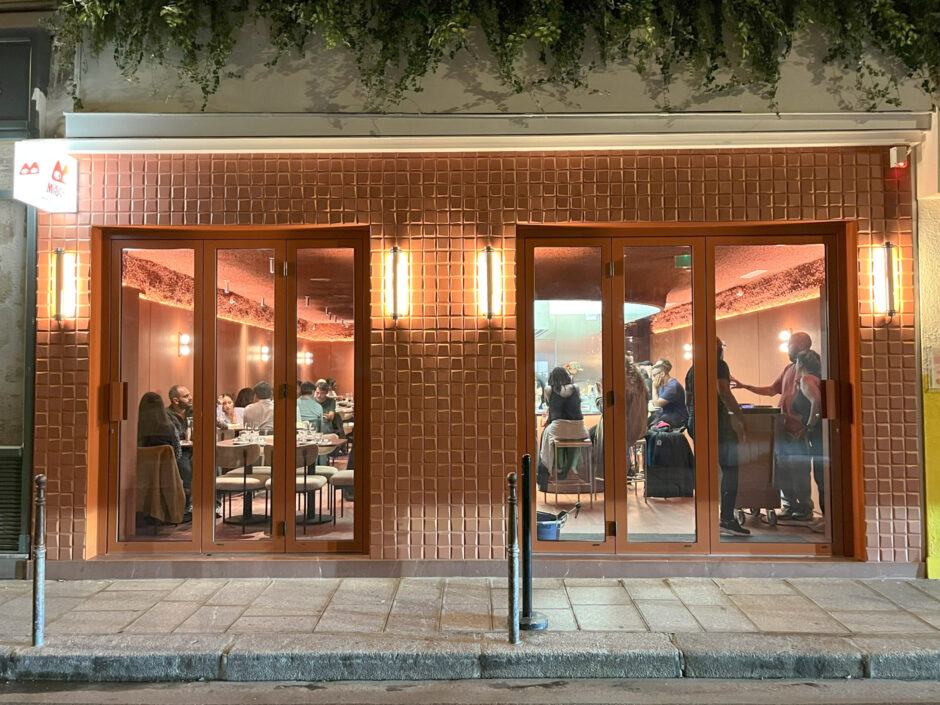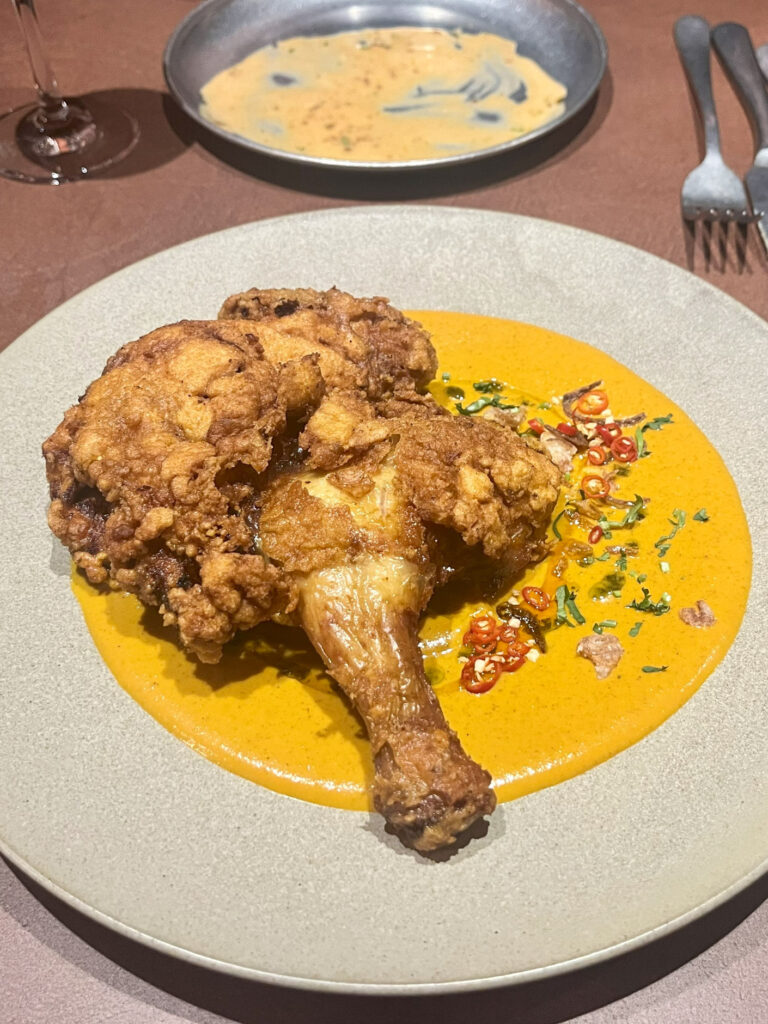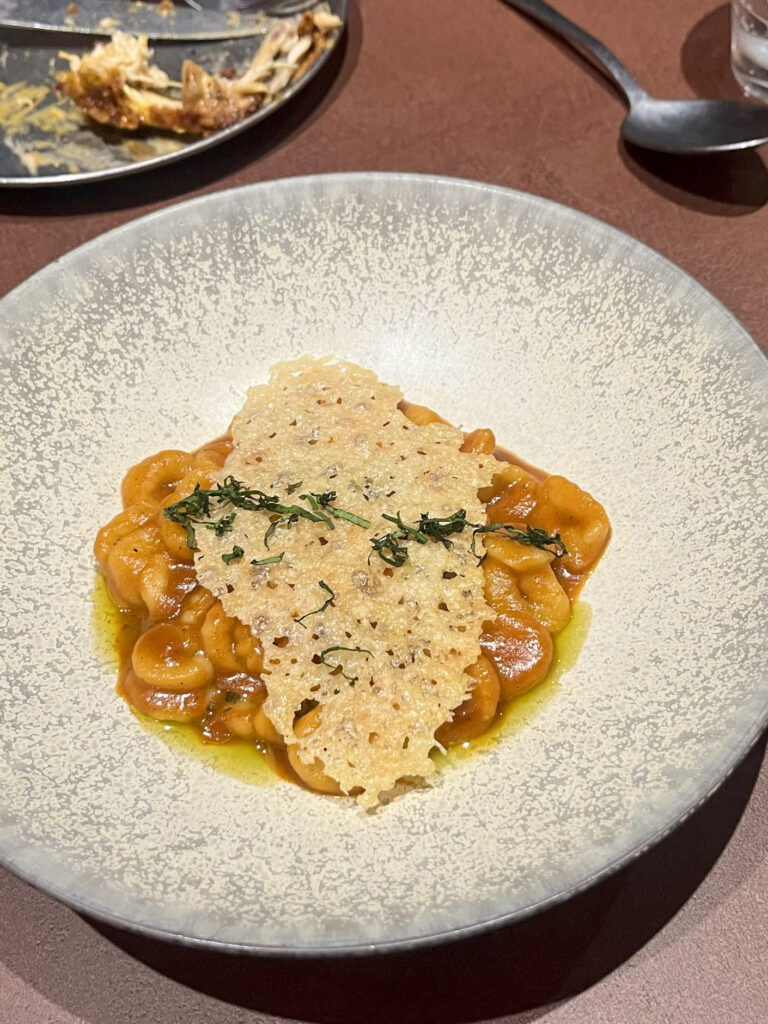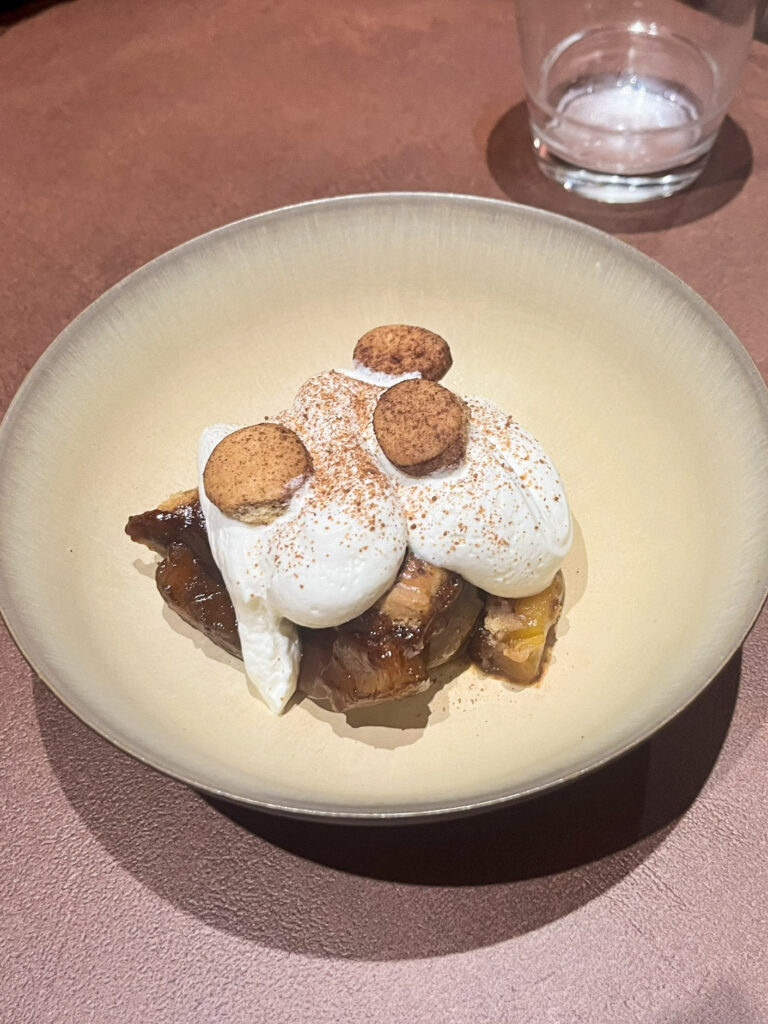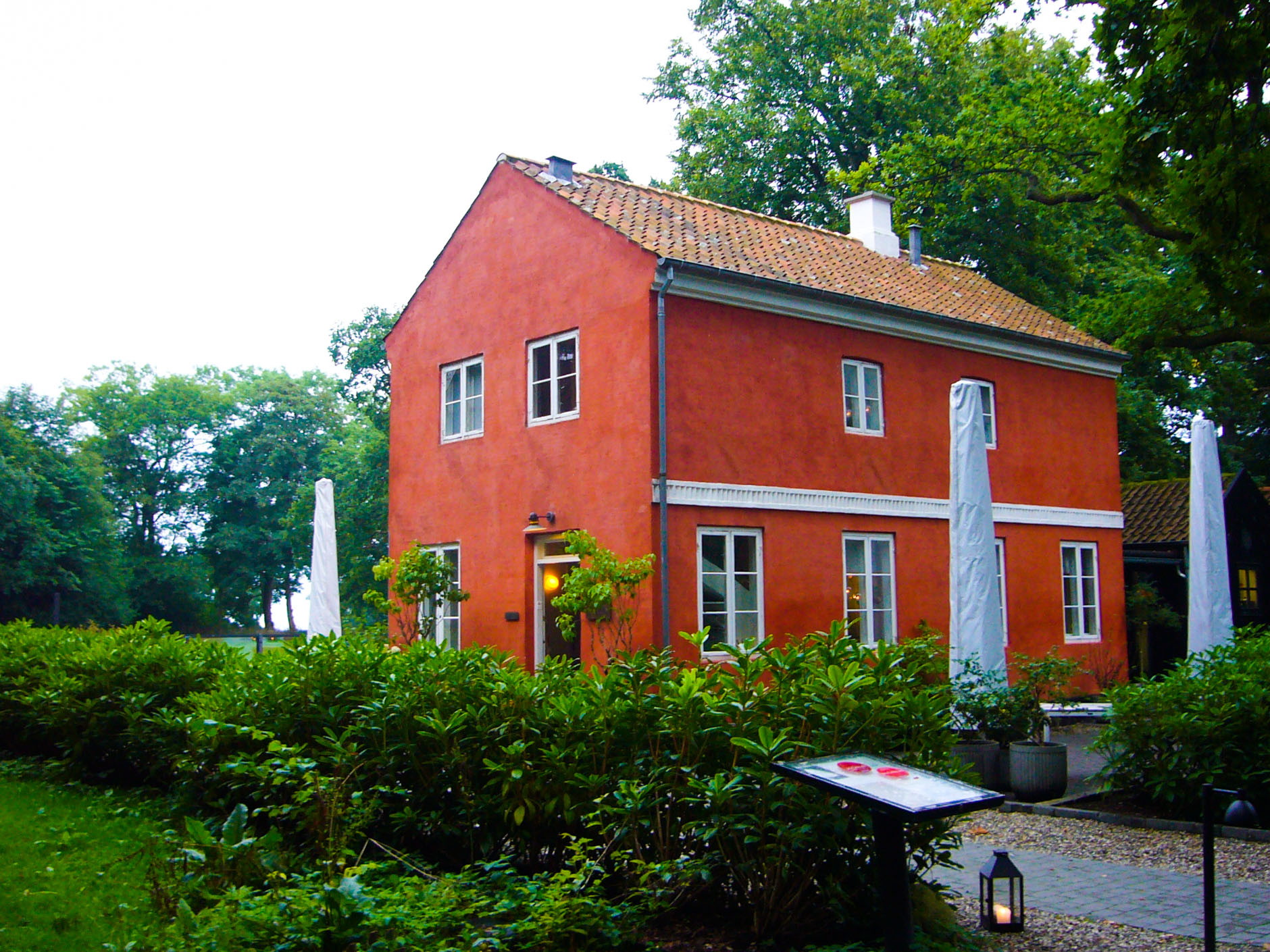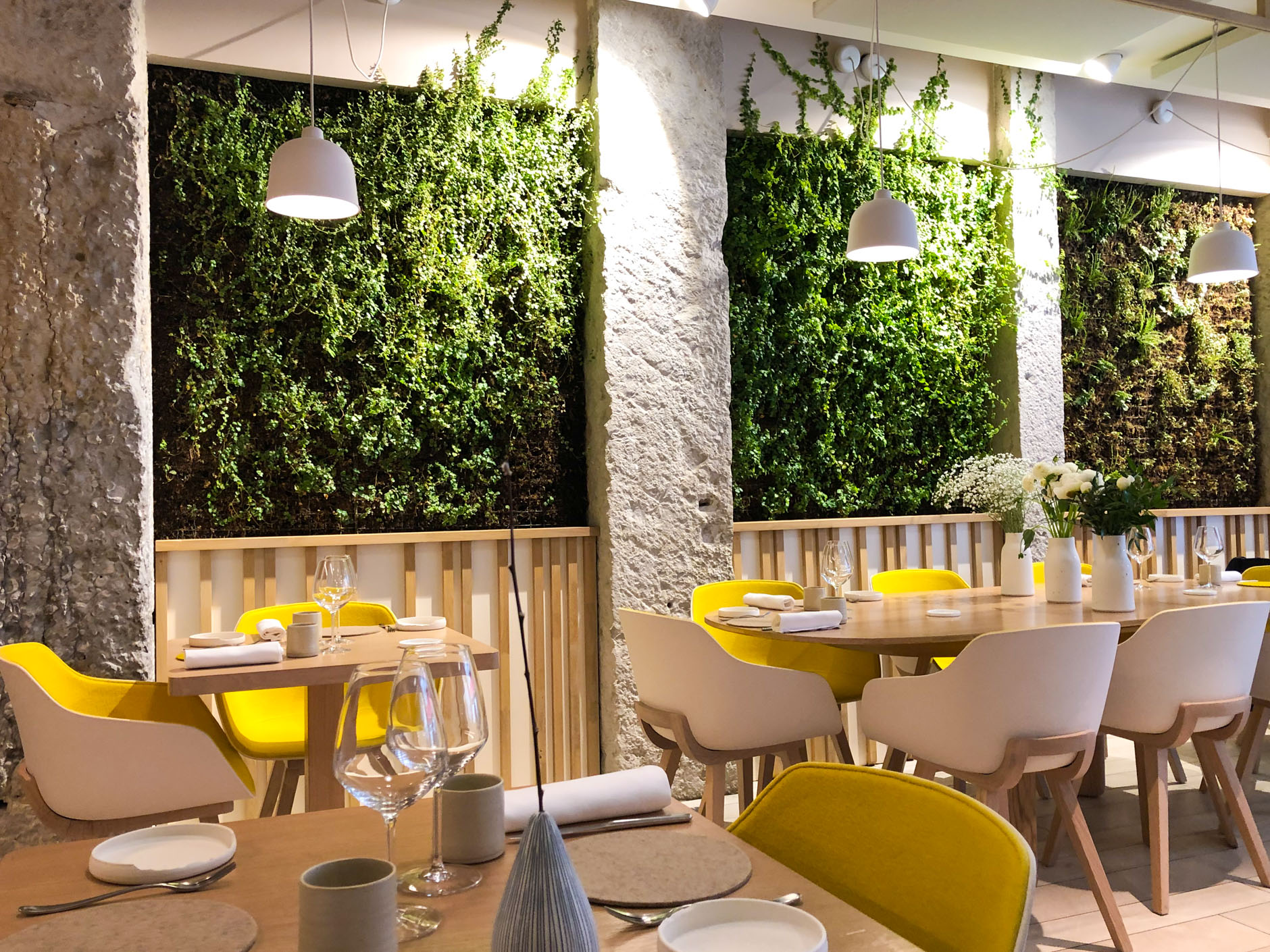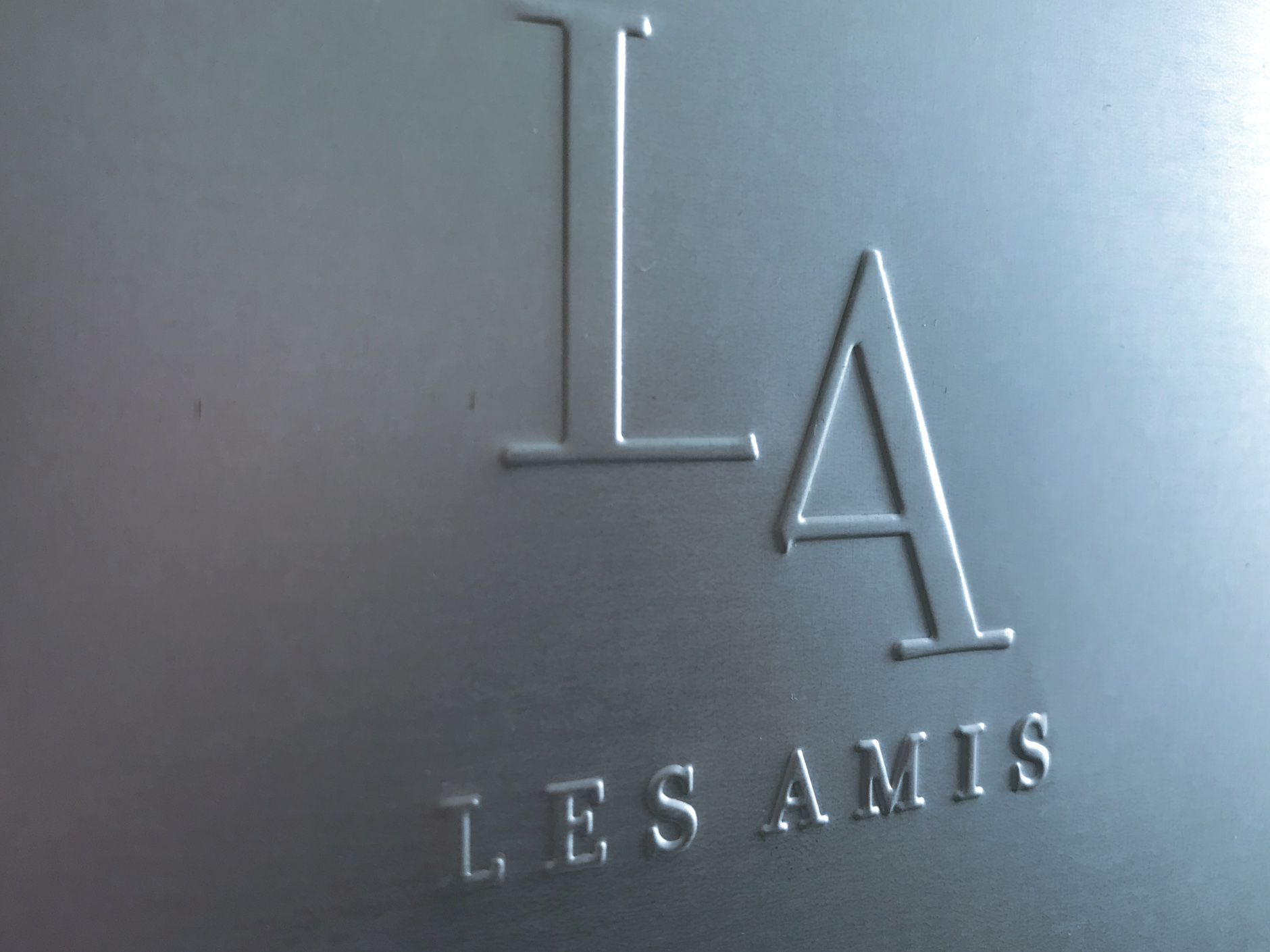A brilliant piece by Vadim Poulet in Vittles this September laid bare the sorry state of Paris restaurant criticism: a “never-ending circle of new restaurants hyped for a couple of weeks before the next ones come in, without anyone bothering to say if it is really worth the fuss”. While I’d like to think some of us still resist that pull, he’s right — too many write-ups are simply press copy, often traded for free meals and almost never disclosed. (And this isn’t limited to Paris.)
It was with Poulet’s words in mind that I visited Mischief, the much-anticipated new restaurant from chef Erica Paredes, during its opening week. Various established guides had already reached for the same press release phrases (“comfort food”, “childhood dishes”, “nostalgia”) a neat illustration of the cycle Poulet described. But the excitement isn’t all manufactured: Paredes’ first restaurant in the 11ème, Reyna, has a loyal following and I like the food there a lot.
Before opening Mischief, Paredes built her reputation through pop-ups and private supper clubs and, during Covid, by delivering fried chicken slick with chilli oil to the bobos who could afford it. Then came Reyna in 2022, billed as “Filipino and South East Asian–rooted food with a French twist.”
‘Fusion cooking’ as a genre accelerated in Paris in the late 2010s, often with a vague gesture towards ‘Asia’. Plenty of those restaurants are still around— Oktobre (“French dishes with Asian accents”), The Hood (“bistrot asiatique à la parisienne”), Shisho (“Healthy Asian Burgers for Meat Eaters and Vegetarians”), and so on.
Reyna opened against that backdrop, at a moment when Parisians were newly energised by the idea of cooking that crossed borders. By definition, Filipino food is hybrid with Spanish, American, Japanese and Chinese influences all in the mix, but Paredes also leant on French technique to create gallant dishes like rendang entrecôte, asparagus with a bagoóng beurre blanc, and a volcanic burrata drowned in ginger–chilli oil and kecap manis. At its best, the food felt loose, fun, and genuinely innovative.
If Filipino food feels like a recent arrival in Paris, it’s worth remembering the formidable Nora Daza, widely regarded as the Philippines’ first celebrity chef and a committed Francophile. In 1972 she came to Paris and opened Aux Iles Philippines just off the Champs-Élysées, the first upscale Filipino restaurant in the city, and the first time many Parisians encountered the flavours of the Philippines. The dining room was staged with chandeliers and heavy white tablecloths. Simone de Beauvoir was said to dine there, Brigitte Bardot too. Filipino tourists came for the relief of hot rice and sinigang, while Parisians discovered crab fat sauce, or violet ube pie for dessert. Daza believed Filipino food could stand proudly beside the Gallic classics, and for a decade she made it happen.
I hope, like Reyna, Mischief will evolve and meet its potential
If Reyna toyed with subversion, Mischief wears it on its sleeve, “deliciously disobedient,” its calling card, splashed across the website and social media. Paredes has said the décor nods to that spirit, though little about the interior feels especially unruly. The room is swathed in earthy red, striking in its Martian glow but otherwise built from familiar touchstones: customised wine glasses etched with a cutesy logo that reappears as a sticker with the bill, stainless steel plates, and a polished minimalism that now feels standard issue.
The one real departure is musical. Mischief has a live DJ — R3Mi — wedged into the doorway, blocking the entrance and blasting music at club volume. Ordering drinks turns into a round of lip-reading. Our waitress, soft-spoken and new, had to repeat herself three times before her words escaped the bass.
Still, not everyone seems to mind. At the table beside us, a group of women in their forties chose to seize the noise, raising their glasses and pitching their voices higher until it seemed they were commanding the fun out of the chaos. Around them are younger couples, families with kids, older Parisians too; outside, a queue stretches down the pavement, the maître d’ apologising to those without reservations. There’s a strong sense that people want Paredes to succeed, and they’re turning up to will her on.
We began with the ultimate rebellious boire — an Austrian pét-nat of grüner veltliner, muscat and welschriesling. There doesn’t seem to be a sommelier, and the wine list feels unfinished: four options by the glass, and three bottles each of natural whites, oranges and reds (all the reds are gamays). The cheapest bottle starts at €40; a little steep compared with other Paris spots of similar ambition. When we asked for the gamay by the glass, the waiter brought something else instead, assuring us we would prefer it, an Italian red, “probably a blend.” It was fine, if a little gruff.
Keeping up the mischief, the menu skips the usual “small” and “large” plates for “feeling peckish” and “super hangry.” By now Sisqó’s Thong Song is thumping so hard I can barely hear my dining partner, except for her complaint that ordering from the ‘super hangry’ section feels like an accusation of greed. I tell her to just pick something — maybe she’s just… super hangry?
The menu stands out for its scope, a sprawl of references: Spain (paella), Vietnam (lamb with “pho sauce” and rice noodles), Italy (linguine), America (tomahawk steak), Japan (mochi). As Paredes promises on her website, and as the press releases repeat, it’s food drawn from her travels and her childhood, domestic cooking to the restaurant. The effect is bold and a little restless, our eyes dart across the page trying to take it all in.
The first plate arrives quickly — polenta fries dusted with homemade cheese powder and served with ranch, Mischief’s “ode to Cheetos”. I’d seen the photos on Instagram, and in person they delivered a hot, satisfying chewiness, the salty powder clinging to your fingers, begging to be licked off. It’s filling, well-seasoned, with a big kick of dill in the ranch that cuts through the richness and gives it an unexpectedly elegant lift. The kind of moreish bar snack that makes you keep drinking.
The fried chicken with butter chicken sauce and rice follows, by far the best dish of the night. We bite in and the coating cracks into burnished shards, revealing tender meat beneath. The sauce is generous and rich, with just enough chilli heat to tingle the tongue; a magic plate that makes the plain bowl of basmati beside it feel even plainer. As R3Mi switches to Whitney Houston and we work through more of the anonymous Italian red and the succulent chicken, we almost lean into the noise, the mischief, but the moment evaporates as the next plates arrive.
Difference alone doesn’t make a great menu; some dishes here clearly need reworking. There were tasty bites, but no through-line of deliciousness
The spaghetti hoops (pasta rings in a tomato sauce with bone marrow and anchovy) are marked “limited”, the dangle of scarcity presumably designed to sharpen their allure. At €20 for a tiny portion (if you’d arrived ‘super hangry,’ it would do little to help), they were a let-down. Paredes has spoken about a recent stint in Italy to master fresh pasta, but the rings were poorly made, rubbery and overworked. It left us hankering for the Campbell’s original (something cheesier, sweeter) the sauce oddly acidic, the bone marrow adding nothing, and the whole thing pretty inedible.
More incongruous were the langoustine dumplings. The wrappers were delicate and well made, the langoustine well-cooked, but the dish as a whole fell flat, the crumbled bacon too chewy when it needed to be crisp; calamansi, promised on the menu, imperceptible; and a sauce, not actively unpleasant, but hovering awkwardly somewhere between broth and bisque, with no brightness to lift it.
The menu’s global sprawl, striking on paper, collapsed in practice into muddled plates with gratuitous extras, even though many of the components were flavourful and well-seasoned. By the end of the meal, chicken bones, tomato acid, bisque — the remnants of those experiments — were piled on our small sharing plates. At restaurant prices you expect resets, and a little more finesse.
We finished with a peach and mango cobbler, topped with whipped vanilla yoghurt and a scatter of “Cinnamon Toast Crunch”. It wasn’t too sweet and I enjoyed the tang of the yoghurt coupled with the sweet fruit and buttery crumble — a pleasant close to the meal.
If the volume isn’t dialled down, Mischief is not the place for a quiet dinner, a date, or a proper catch-up with friends or family. With a larger drinks list it might work as a spot to start the night with a plate of tasty polenta fries. Difference alone doesn’t make a great menu; some dishes here clearly need reworking. There were tasty bites, but no through-line of deliciousness, and the meal left us full without feeling satisfied. I hope, like Reyna, Mischief will evolve and meet its potential.
25 rue des Gravilliers
75003 Paris
France
October 2025

